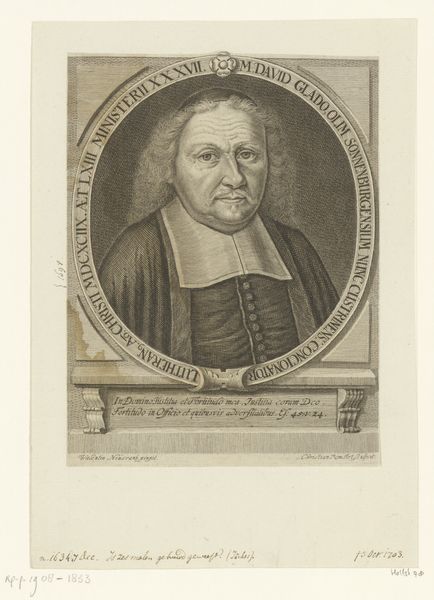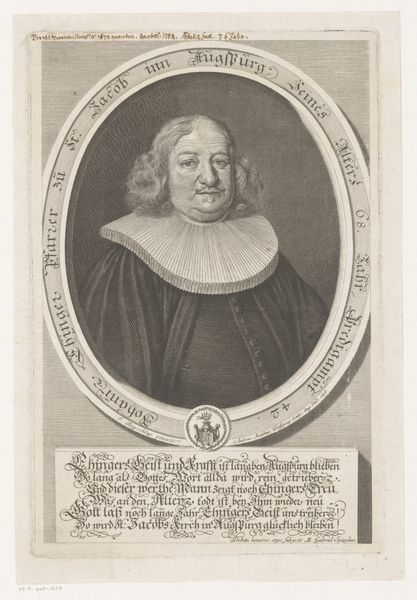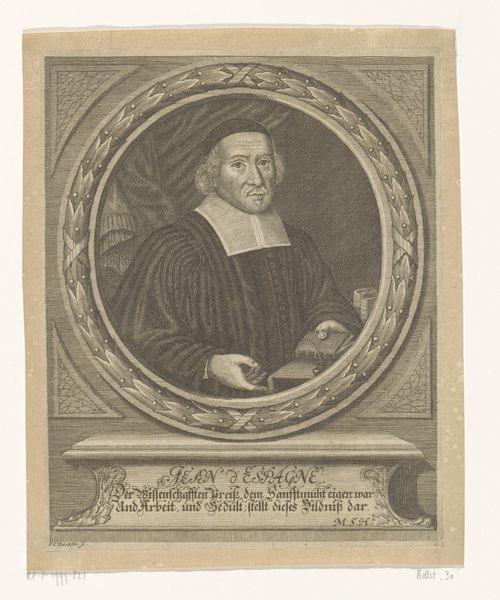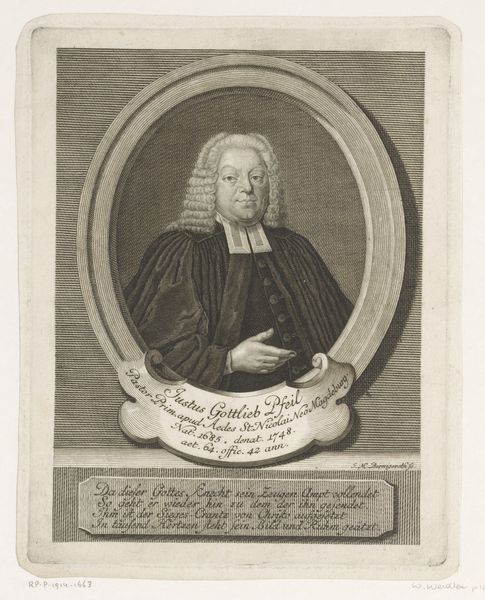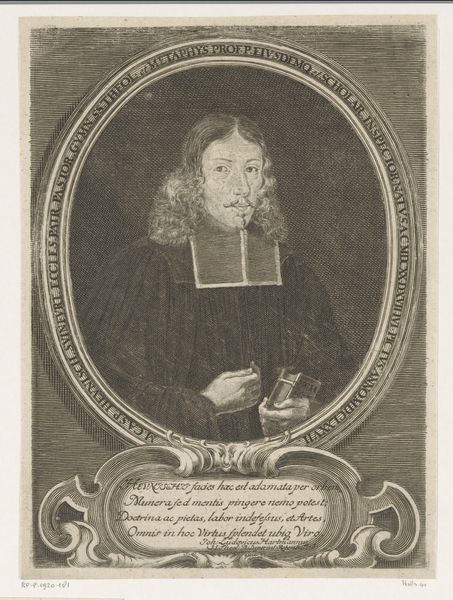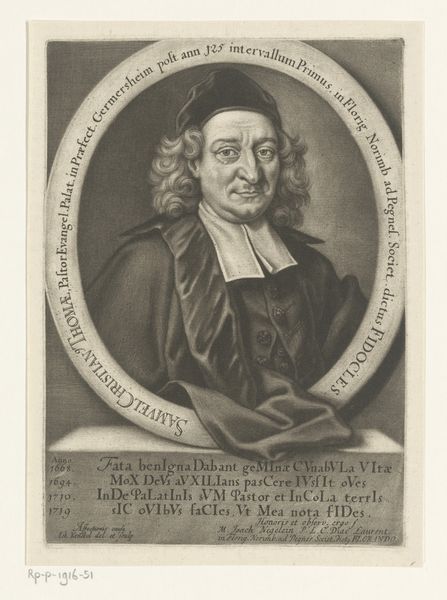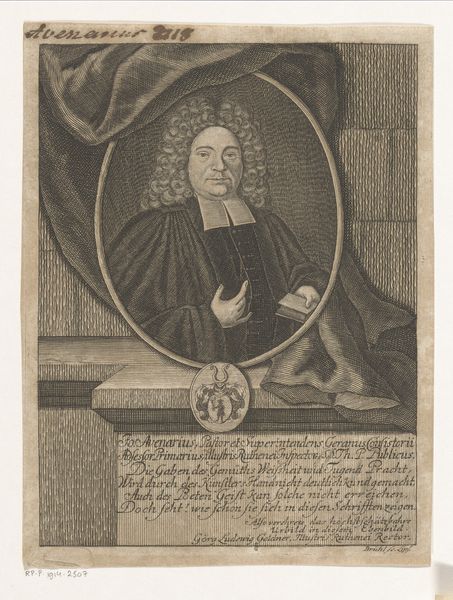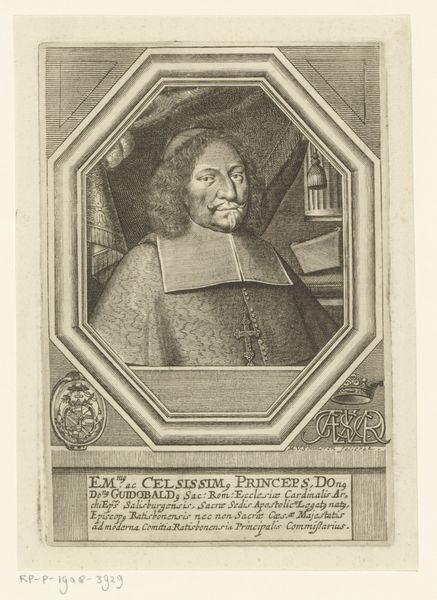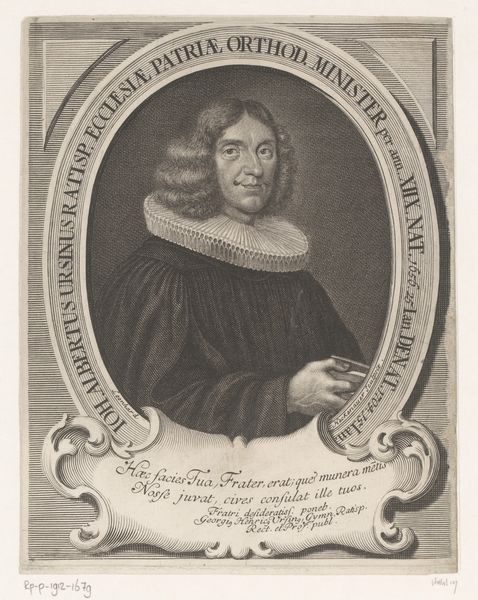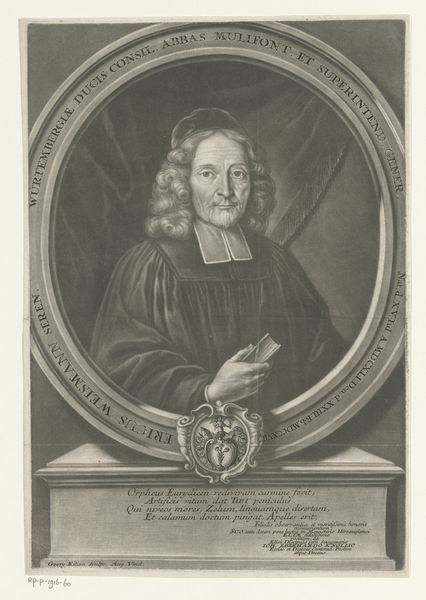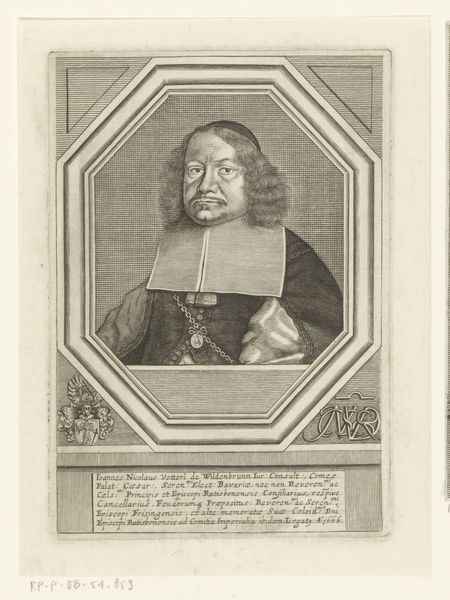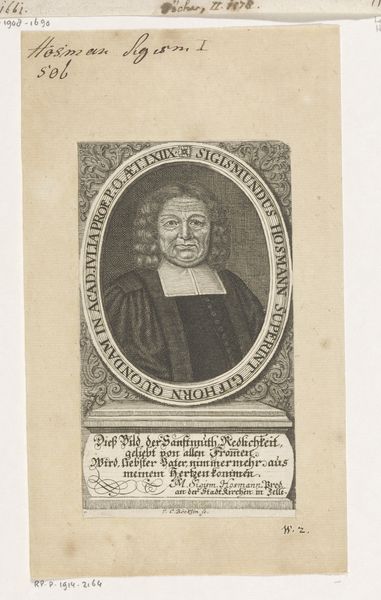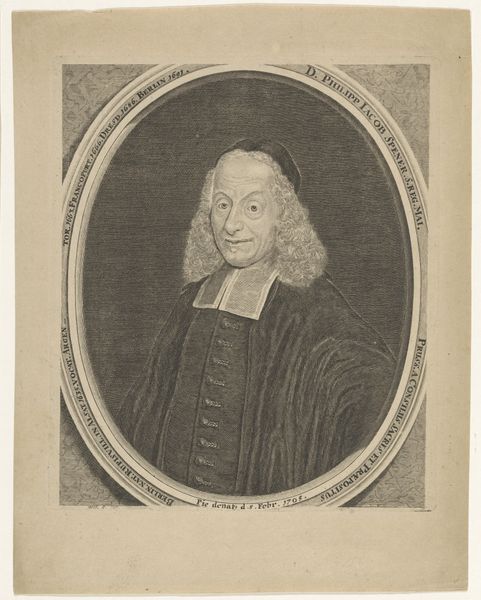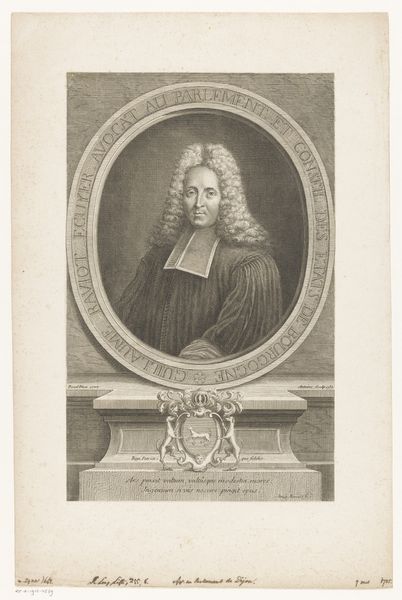
print, engraving
#
portrait
#
baroque
# print
#
book
#
old engraving style
#
portrait drawing
#
history-painting
#
engraving
Dimensions: height 146 mm, width 95 mm
Copyright: Rijks Museum: Open Domain
Curator: This print, housed here at the Rijksmuseum, is a portrait of Michael Stemler, created sometime between 1702 and 1763 by Johann Benjamin Brühl. Editor: There's a somber dignity here. The sitter's gaze is direct, almost challenging, isn't it? And the stark contrast emphasizes the folds of the drapery and his clerical collar. Curator: Yes, and observe how Brühl employs hatching and cross-hatching techniques throughout to model form and generate a sense of volume within the composition. Notice particularly how the ovoid border serves to compress the image and focus attention on the figure's expression. Editor: That oval frame certainly adds to the symbolic weight, like an icon contained and venerated. His book suggests learning and religious authority, anchoring him within the intellectual traditions of his time. Perhaps even implying the heavy weight of knowledge or scripture. Curator: Interesting point. Semiotically, we can interpret the book as an essential signifier that reinforces the figure’s role. Beyond its basic function as an object, it indicates his professional identity and the context within which he operated. Editor: And the architectural element below the oval, the pedestal with its inscription. That suggests a foundation—Stemler is not merely a man, but a figure built upon theological principles, memorialized for his role. It speaks to enduring faith and legacy. Curator: The print, as a reproduction, offers an insight into the hierarchical nature of art itself. Its purpose was presumably didactic: an image reproduced to spread knowledge of an important theological figure of the era. The medium becomes an intrinsic element of the image's purpose. Editor: Brühl and Stemler—artists and theologians leave enduring traces of themselves. A fascinating dialogue, across the centuries, of faith, image, and authority. Curator: Indeed. In its structure and deployment of graphic means, this print encapsulates core concerns of Baroque visual culture and offers much scope for extended analysis.
Comments
No comments
Be the first to comment and join the conversation on the ultimate creative platform.
